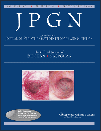Enterobius vermicularis and Colitis in Children
ABSTRACT
Objectives:
We observed a cohort of children presenting with rectal bleeding that were identified as having Enterobius vermicularis at colonoscopy and questioned the reliability of conventional diagnostic methods of identifying E. vermicularis.
Patients and Methods:
The study was retrospective in nature and subjects were investigated by colonoscopy between May 1997 and December 1999. Patients were identified as having E. vermicularis infestation by direct visualisation of the adult worms at colonoscopy. Patients were treated with mebendazole and a record of their clinical response documented.
Results:
A total of 180 colonoscopic examinations were performed during the study period. E. vermicularis was identified macroscopically in 31 cases (17.2%). The symptom profile of patients with E. vermicularis were abdominal pain, 19 of 26 (73%); rectal bleeding, 16 of 26 (62%); chronic diarrhoea, 13 of 26 (50%) and weight loss, 11 of 26 (42%). Ova cysts and parasites were identified in none of the saline swabs analysed in 20 patients. Sellotape testing was performed in only 4 patients and was negative in all. Of the 26 children, 21 (81%) demonstrated histopathological features of nonspecific colitis. There was clinical resolution of symptoms in 19 of 23 patients.
Conclusions:
We suggest that in patients with symptoms suggestive of inflammatory bowel disease, E. vermicularis infestation must be excluded as a common cause of nonspecific colitis. We also suggest that diagnostic tests such as saline swabs and Sellotape testing may be lacking in sensitivity.




